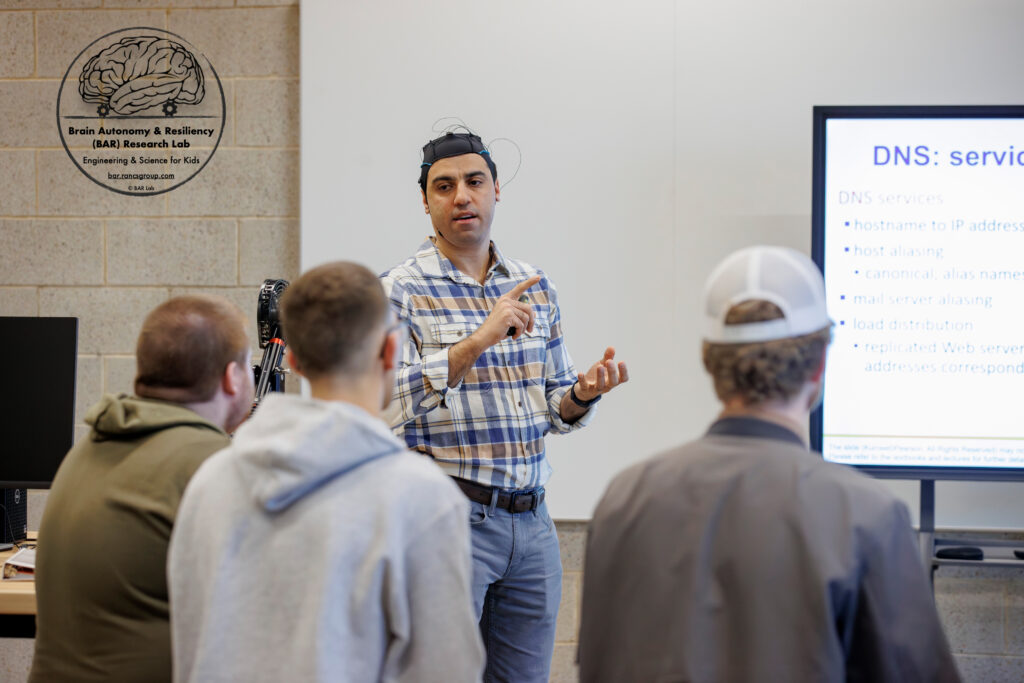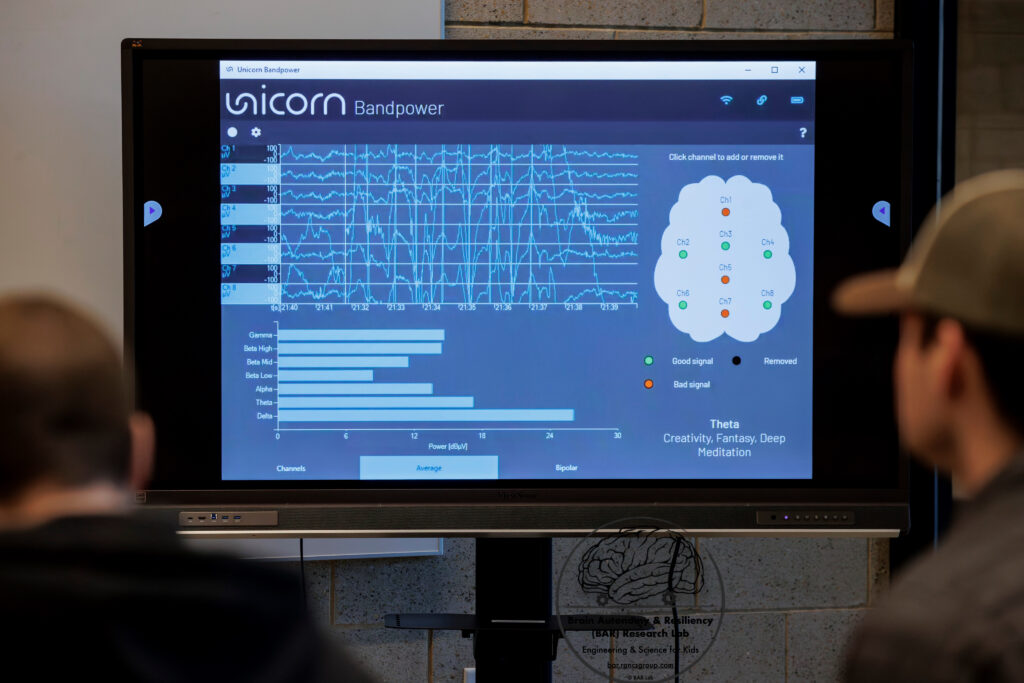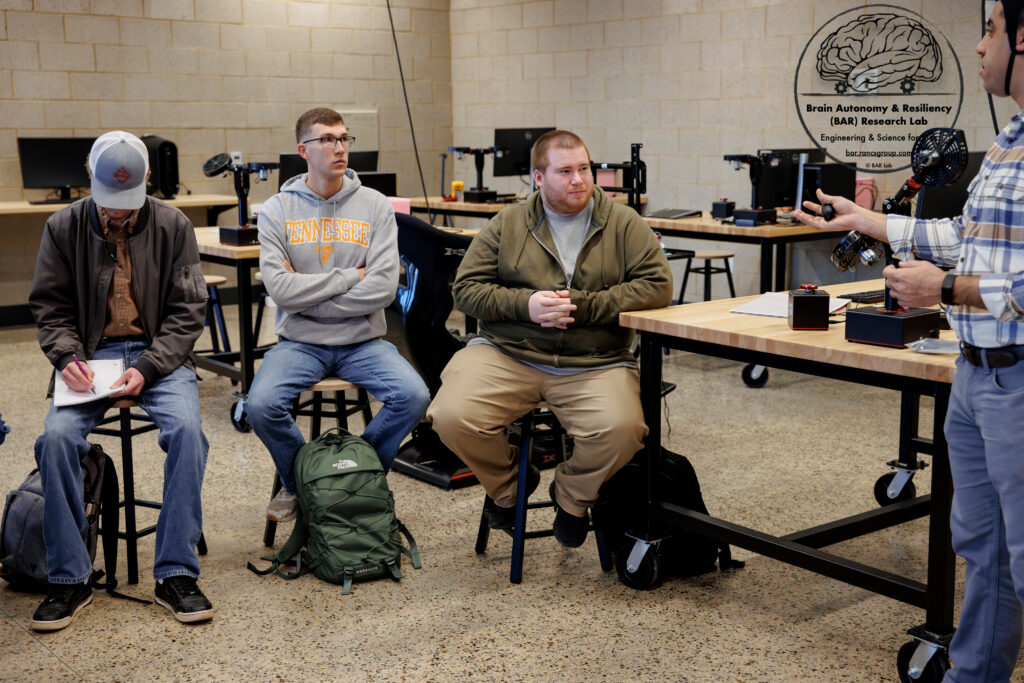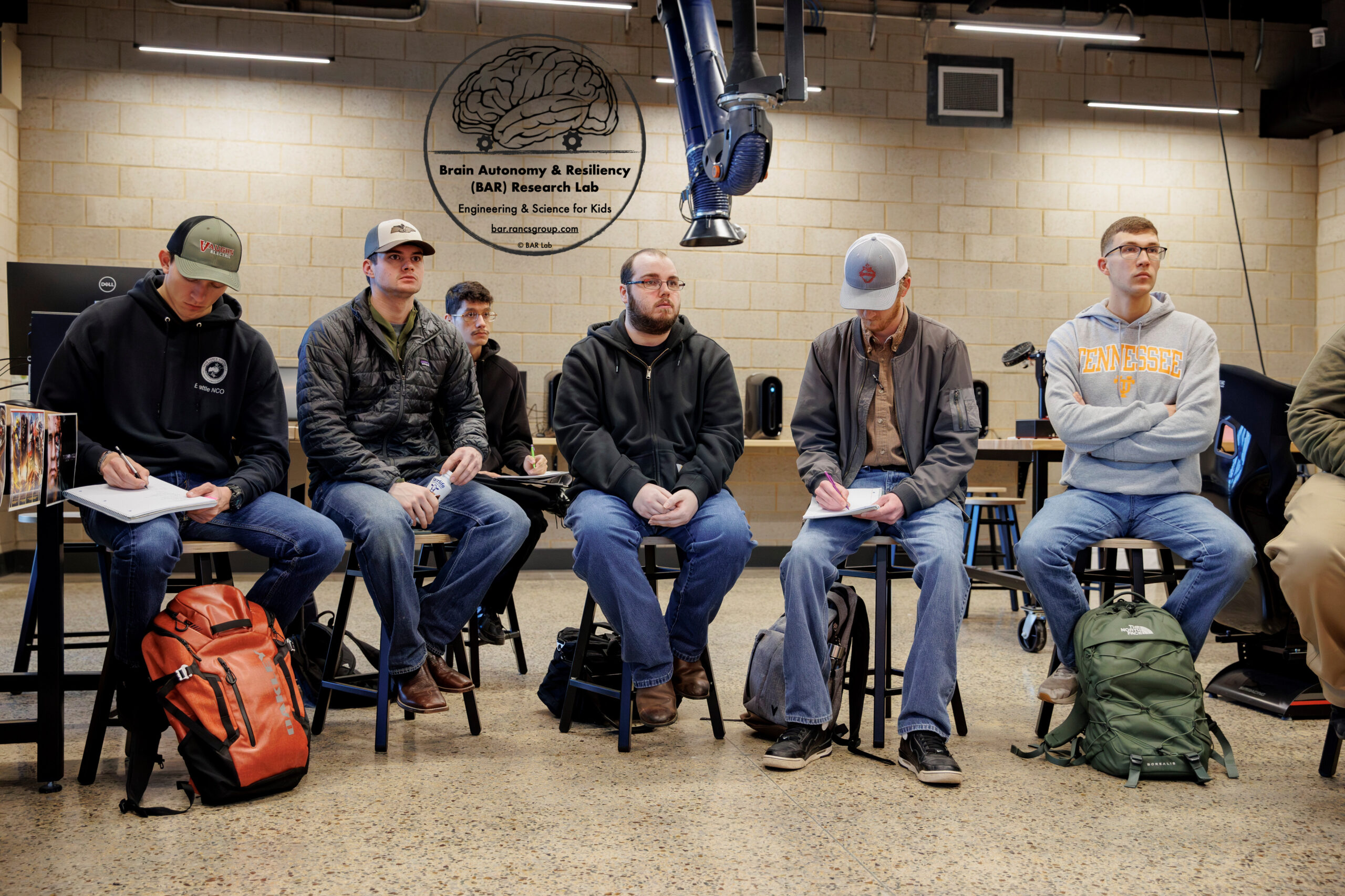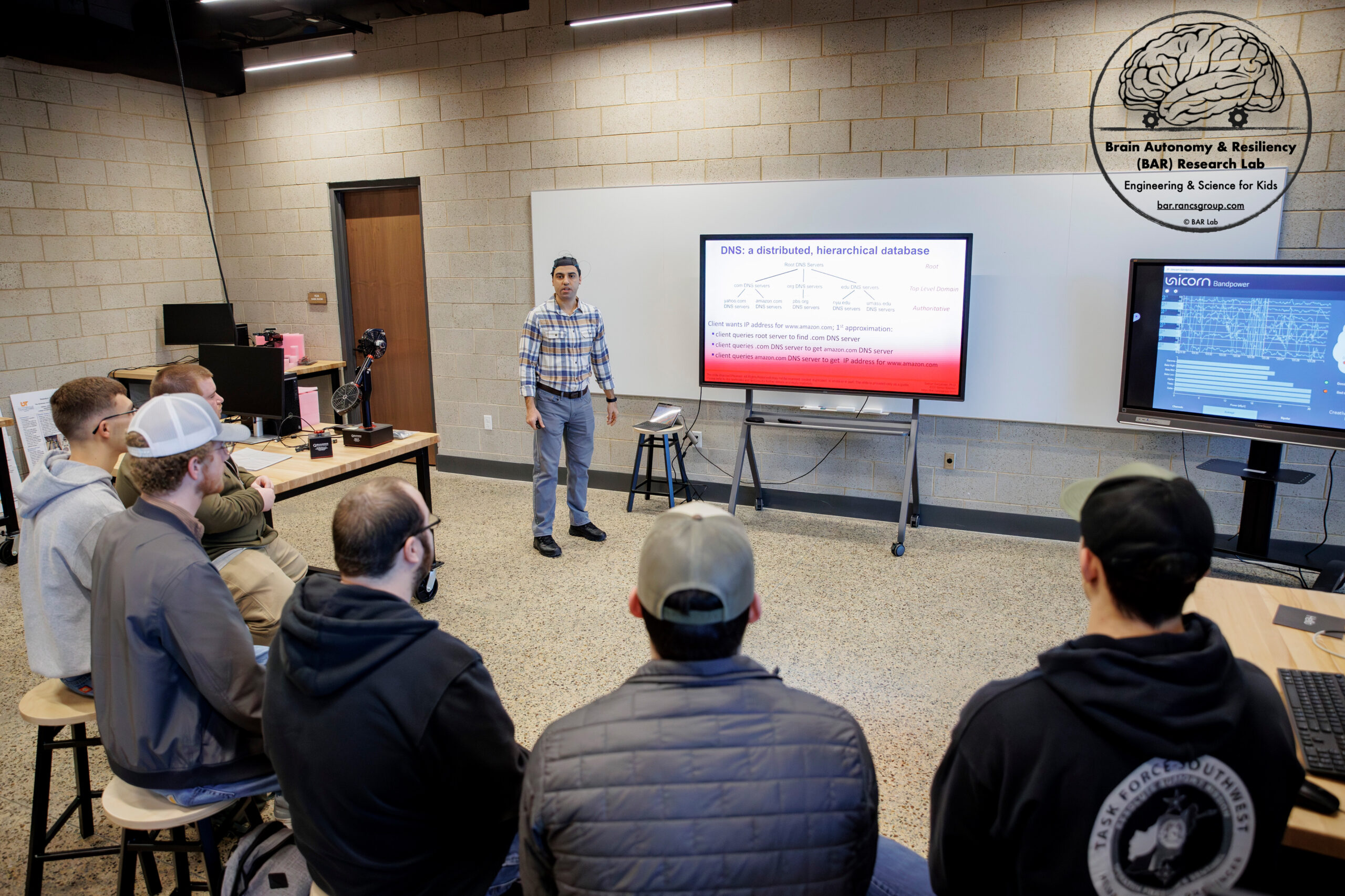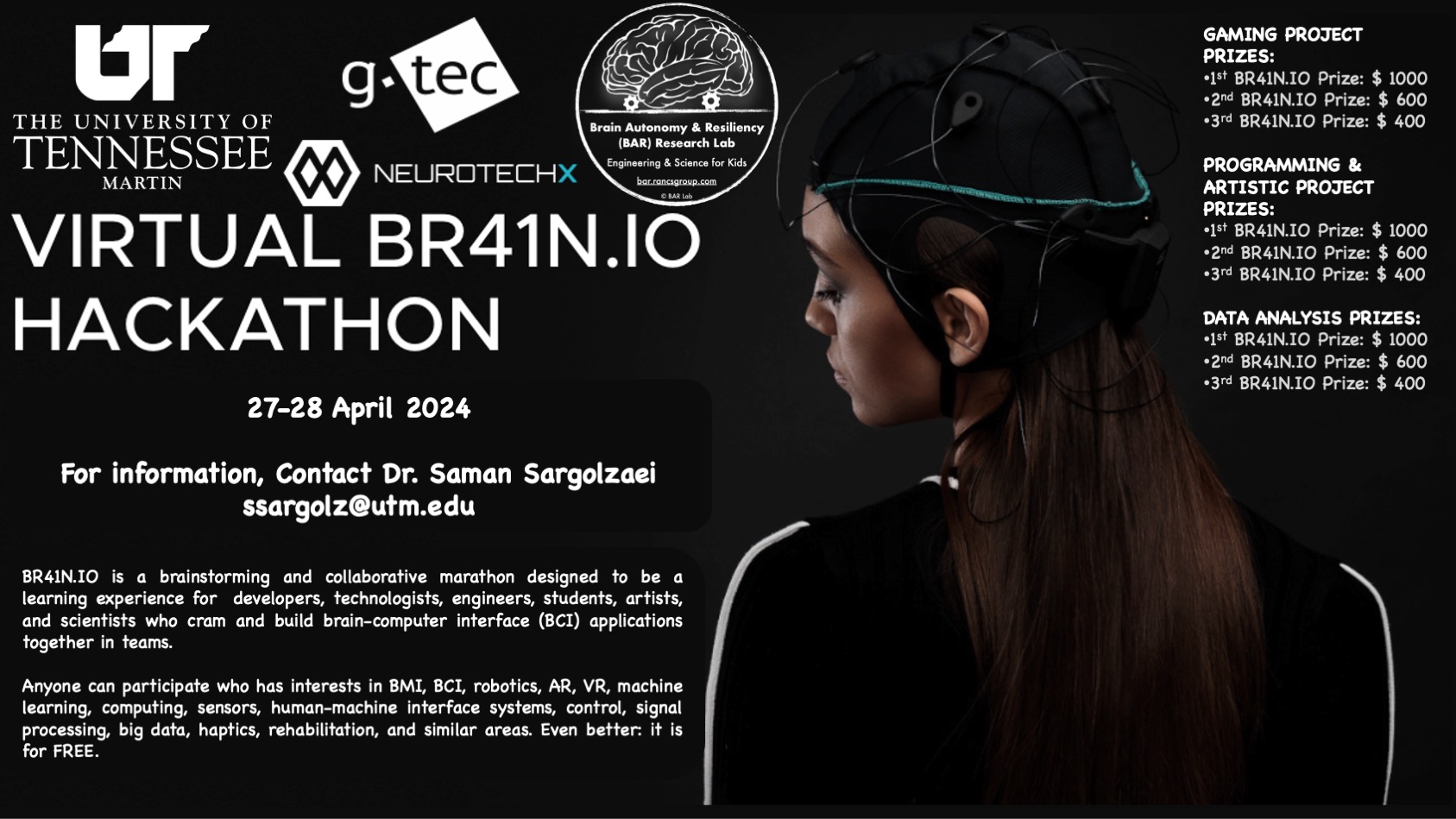
The Brain Autonomy and Resiliency (BAR) Lab at The University of Tennessee at Martin is to play host to the 2024 Virtual BR41N.IO Hackathon.
BR41N.IO hackathon seeks to encourage collaboration, innovation, and the exploration of the vast possibilities that BCI technologies offer in motor rehabilitation of stroke patients, control of devices for disabled people, and cognitive training, gaming, programming, data analysis, and artistic endeavors. The Hackathon series was created as an education, research, and development opportunity focused on BCI. Uniting students, scientists, programmers, engineers, and enthusiasts, the Hackathon encourages collaborative teamwork, where participants undertake the challenge of programming or constructing their own fully functional BCI. These BCIs are designed to control anything from drones to Sphero or e-puck robots.
Open to anyone intrigued by robotics, BCI, virtual reality, human-machine interface systems, and related subjects; the Hackathon promises an inclusive engagement. Dr. Saman Sargolzaei, the local point of contact for the Hackathon and assistant professor of engineering, draws parallels between brain-machine interfaces and experimental endeavors where thoughts seamlessly translate into action, unlocking new realms of control and communication.
“The best example is: You may have heard about Neuralink with Elon Musk,” he said. “They’re currently running their first clinical trial for an implantable chip for recording and decoding neural activities at a single neuron level, a new dimension of recording in such trials to help individuals with paralysis control external devices.
“If you boil it down to everyday applications, it would be like putting your favorite hat on and controlling your favorite game character or making in-game decisions using your thoughts, composing your music and modifying tunes with brain waves, interacting with a dynamic art installation or experience an interactive storytelling, enhancing your study habits by letting your brain tells you to take a break because you’re apparently distracted, and so on.”
Sargolzaei said, “What I like about this technology more than anything is the extent of abilities It provides people and patients with disabilities with to enhance the quality of life to its next level.”
There are no brain implants in the Hackathon, but participants wear a device on their head with safe and non-invasive electrodes that will read brain activity through the scalp.
“Just as a big city has constant communication and activities, our brain’s neurons are in constant communication, through exchange of chemicals, by sending and receiving these tiny electrical signals when we think, play or even at sleep. The scalp electroencephalography (EEG) sensors pick up these signals and amplify them, like what magnifier glasses do, so doctors and scientists can decode the activities,” Sargolzaei said. “Now, from those recordings, you can extract patterns (features) based on which you train the computer to do a certain task like hitting the right or left flippers in a pinball game.”
For further news coverage, https://news.utm.edu/2024/02/05/utm-to-be-one-of-19-worldwide-hosts-for-hackathon/
